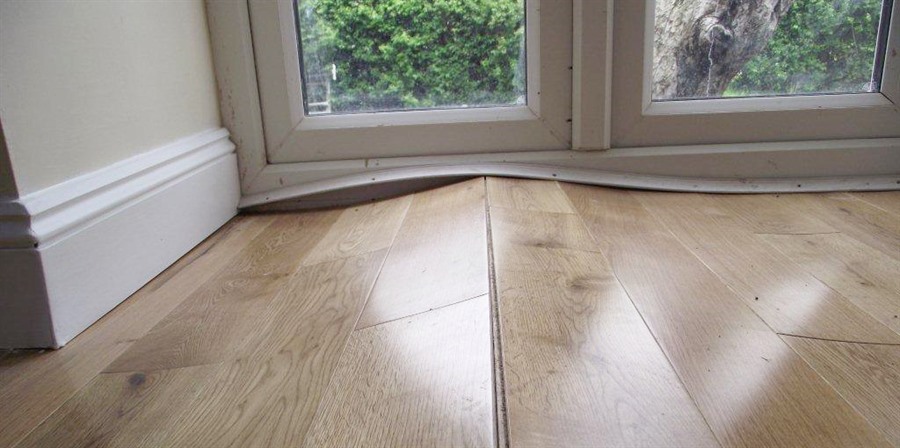Blog Articles, Facts
4 Reasons your Floating Floor is Failing
Laminate flooring offers homeowners a long-lasting and stylish flooring solution, but despite the durability and easy maintenance of these products, sometimes your floating floor will fail. Outlined in the following article is a summary of the main reasons your floating floor may fail, and how it can be either prevented or remedied.
First of all, what is a floating floor?
A floating floor is a floor that does not need to be nailed or glued to the subfloor. The term floating floor refers to the installation method, but is often used synonymously with laminate flooring and is also applied now to other coverings such as floating tile systems and vinyl flooring in a domestic/commercial context. (1)
What’s the cause of the floating floor failure?
Here is a list of the most common floating failures, and what they could be attributed to. Given are some proposed solutions of how they can be handled.
|
The problem |
The reason |
|
Peaking Peaking refers to when the laminate floorboards push up against each other resulting in high points, or “peaks”. |
The most common cause of peaking is no expansion in your floating floor between the walls/vertical surfaces, or the overzealous use of water. This “expansion gap” allows for the entire floor to expand/contract in situations of changeable weather conditions, for example when it is raining or when the weather is warm. Peaking can be fixed by removing your quarter rounds and cutting a minimum 10mm expansion gap between your floating floor and vertical surfaces to allow for the natural expansion of the product. Similarly, peaking can occur if your floorboards have been pinned down, not allowing them to “float” as they should. In this scenario, any nails/glue or door stoppers through/to the floor need to be removed or scraped off, allowing for the free movement of the floor unit. Peaking can be corrected by walking on the affected area for some time until the panels flatten. If caused by over wetting, stop the use of water and allow the floor panels to dry out, this can take +/- 14/20 days, if the peaking is still present then the floor panels will need to be replaced. |
|
Buckling or Warping Buckling and warping refer to when your floorboards take on a convex or concave shape, as opposed to being level. |
First, make sure that your laminate floor has been constructed with a balancing layer beneath the board which is the mark of a superior product. Buckling or warping is the result of moisture egress either from the top or through the screed/sub-floor. Excess moisture can seep into the HDF core of your floor from the sub-floor, but each Inovar Floor & Black Forest board is waxed on all the tongues & grooves to protect the floor against water/moisture egress. If not sealed it will lead to the warping or buckling of the board to accommodate the inner swelling. Water-damaged laminate boards will most often need to be replaced, but before replacing the affected area, you will need to make sure that you correct and establish the cause of the excess water, plus ensure that there is a moisture barrier between the sub-floor and the floating floor. Water is the no. 1 enemy of your laminate floors, so make sure to take a moisture reading before installing over your sub-floor and ensure that water is not seeping into the foundations of your house. |
|
Mould and Mildew Mould and mildew spores are transported by air currents and can grow on any surface when moisture is present. Mould and mildew are bad for people’s health, and for that reason, they are a growing concern for homeowners. |
Mould and mildew point to the presence of excessive water and the only way of dealing with this problem is to pinpoint the source of the excess moisture and then to remove it completely. Then, depending on the damage to the flooring, your floorboards should either be cleaned and refitted or entirely replaced once the excess moisture has been eradicated. |
|
Gapping Gapping refers to spaces showing up between the planks of your constructed floating floor.
|
Gapping is a less common issue and is indicative of massive changes in temperature causing a “hot house” effect (usually when installed in a closed up holiday home), going from warm to cold with no air circulation. This will cause sharp contraction/expansion of the floorboards. Therefore, it is important to acclimatise your laminate floor in the room where they are to be installed for between 24 and 48 hours, to allow the boards to contract, or expand as required. Usually, floorboards will be coming from a cold factory floor and moving into a warm home, meaning they would require some time to expand/contract. Gapping would be the next stage to happen after peaking, as this is the only way that the product can relieve the pressure exerted if insufficient expansion gaps have been provided or the floor being trapped. |


